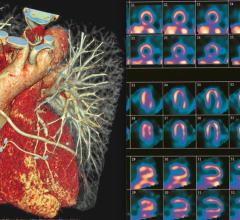November 4, 2011 – PhysioSonics announced that it received a $2.5 million grant from the Telemedicine and Advanced Technology Research Center (TATRC). TATRC is an organization within the headquarters of the U.S. Army Medical Research and Materiel Command, located at Fort Detrick, Maryland. With this grant, PhysioSonics will optimize its proprietary cerebral blood-flow monitor to detect vasospasm. Following a successful launch in the civilian healthcare market, the military will test the blood-flow monitor with the goal of deploying it at military facilities that care for soldiers with traumatic brain injuries (TBI).
Blast-induced TBI is a common occurrence on the battlefield, and can be among the most devastating and difficult to detect. Vasospasm refers to a condition in which the blood vessels shudder, leading to vasoconstriction, or shrinkage of the vessels, causing reduced blood flow within the brain. This can result in brain damage or even death. Vasospasm occurs in nearly half of blast-induced TBI victims. The ability to monitor soldiers at high risk for vasospasm can lead to potentially life-saving, preventative treatments. Monitoring their treatment for vasospasm, once it occurs, can also reduce morbidity and mortality. Vasospasm is difficult to detect and monitor with currently available technology.
"PhysioSonics has developed a simple to use, portable monitor that can automatically identify the mid-cerebral artery and provide a continuous read of the blood's flow and peak velocity," said Brad Harlow, CEO of PhysioSonics. "This is essential for diagnosing and monitoring vasospasm. Transcranial Doppler ultrasound – the current technology standard – relies on highly trained medical personnel and is therefore too awkward and expensive to be deployed near combat, or even at high volume military hospitals. We believe that our blood flow monitor, adapted for the rigors of military use, can help clinicians accurately monitor for vasospasm among soldiers injured by a blast, from an improvised explosive device, a land mine or another traumatic explosion."
Use of PhysioSonics' cerebral blood flow device for detecting vasospasm is investigational and not an approved use in the United States. The company recently completed a clinical study of its blood flow monitor that showed parity with transcranial Doppler ultrasound. It intends to file a 510(k) application for the blood-flow monitor with the U.S. Food and Drug Administration (FDA).
Upon commercialization, the company intends to sell the device and disposables to hospitals with neurosurgery and cardiac surgery suites in the United States. It will later submit a pre-market approval application to the FDA to add a non-invasive intracranial pressure monitoring indication to the device.
About PhysioSonics
PhysioSonics has developed a user-independent, non-invasive, long-term cerebral blood flow (CBF) and emboli monitor. Utilizing novel ultrasound technology, the company has developed a new method that enables the device to automatically locate and hold on the cerebral artery without a trained sonographer. This auto-locating ultrasound technology thus enables an easy-to-use method for the continuous monitoring of CBF and emboli.


 January 23, 2024
January 23, 2024 








